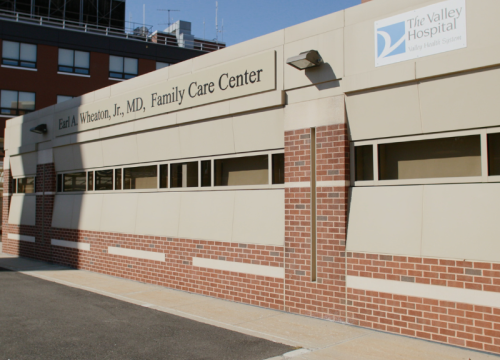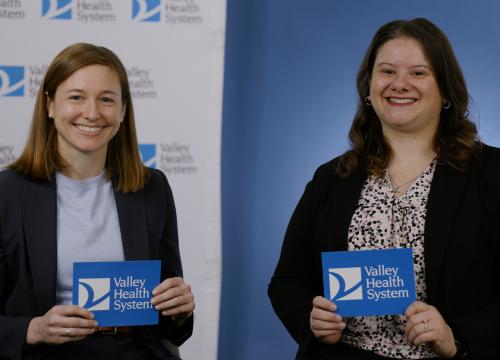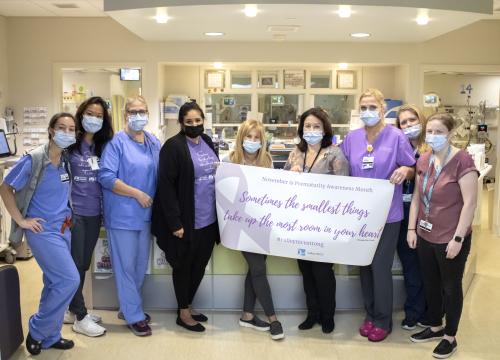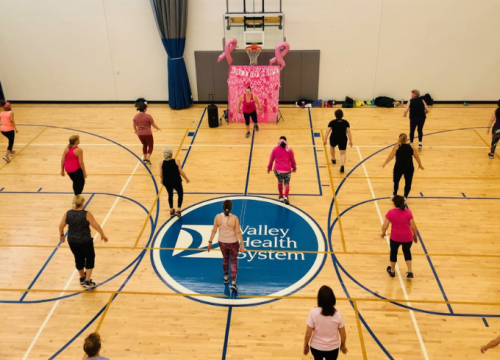Minimally invasive gynecologic surgery is surgery that uses smaller incisions than typical surgery. Gynecologic surgeons perform minimally invasive surgery by inserting a tiny camera that allows them to see inside your body.
Minimally invasive gynecologic surgery can be performed by the surgeon using small instruments with or without a robotic system (such as the da Vinci® Surgical System).
Conditions Treated with Minimally Invasive Gynecologic Surgery
Valley’s gynecologic surgery program focuses on the diagnosis and treatment of:
- Abnormal vaginal bleeding
- Fibroids
- Hormone dysregulation
- Endometriosis
- Pelvic pain
- Ovarian cysts
Minimally Invasive Gynecologic Surgery Benefits
Because minimally invasive gynecologic surgery uses smaller incisions, it offers significant benefits over traditional surgery:
- Significantly less pain
- Less blood loss
- Less scarring
- A shorter hospital stay, typically going home the same day as surgery
- A faster return to normal daily activities
Minimally Invasive Gynecologic Surgery at Valley
Gynecologic surgeons at Valley specialize in the latest, most effective techniques, including minimally invasive and robotic procedures to treat a range of gynecologic conditions.
Hysteroscopy
- Hysteroscopy is a minor surgical procedure that places a small camera through the vagina and cervix to see the inside cavity of the uterus.
- Hysteroscopy can be used to remove endometrial polyps or certain fibroids that are located inside the endometrial cavity.
- No incisions are needed through the abdomen and patients can often return to work the next day.
Laparoscopic Ovarian Cystectomy and/or Excision of Endometriosis
- A small incision is used to place a camera inside the abdomen to remove ovarian cysts, which preserves normal ovarian tissue.
- Patients with endometriosis can also have endometriosis removed laparoscopically. In cases of significant disease, robotic-assisted laparoscopy can facilitate complex surgeries.
Laparoscopic Hysterectomy
- A hysterectomy is a surgical procedure in which the uterus is removed. Hysterectomies can be performed while leaving the ovaries in place and frequently it is recommended that women keep their ovaries at the time of hysterectomy.
- A laparoscopic hysterectomy is done with several small incisions through the abdomen, as opposed to an open hysterectomy done with a c-section-style bikini incision. Smaller incisions mean less pain, shorter hospital stays, faster recovery, and less blood loss.
Robotic Assisted Laparoscopic Hysterectomy
- Robotic-assisted laparoscopic hysterectomy is similar to a laparoscopic hysterectomy, with the addition of using the robotic system. The robotic system adds 3D vision, cancelation of surgeon tremor, and easier suturing which may be needed for more complex surgeries.
- Using robotic surgery via the da Vinci System, our physicians at Valley can perform a hysterectomy through tiny incisions with extraordinary precision and control.
- Your surgeon will discuss options with you and determine whether the laparoscopic or robotic approach to hysterectomy is best for you.
Robotic Assisted Laparoscopic Myomectomy
- A robotic-assisted laparoscopic myomectomy is an innovative form of minimally invasive myomectomy which enhances laparoscopic surgery. With the assistance of the da Vinci Surgical System, surgeons at Valley remove uterine fibroids through small incisions with unmatched precision and control.
- A myomectomy allows women to preserve the opportunity for a future pregnancy.
Why Choose Valley for Minimally Invasive Gynecologic Surgery?
- Robotic and traditional surgery expertise: Our physicians Howard Jones, MD and Nicole Astill, MD have over 10 years of fellowship-trained expertise in all forms of gynecologic surgery — including laparoscopic and robotic surgeries. Both have also received additional fellowship training in minimally invasive gynecological surgery. This expertise allows them to discuss the risks and benefits of different approaches with you, so that — together — you can decide on the best approach for your situation.
















